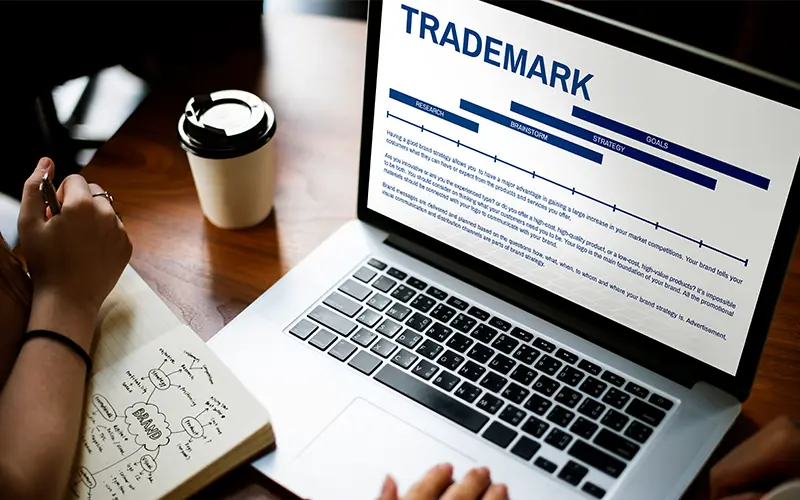Trademark Opposition
- Home
- »
- Trademark Opposition

Trademark Opposition
Trademark opposition is a legal procedure where a third party challenges the registration of a trademark within a specified period after its publication in the trademark journal. The opposition must be filed within four months from the date of publication. Reasons for opposition can include similarity to an existing trademark, potential to cause confusion among consumers, or being descriptive or generic. The process involves submitting a notice of opposition detailing the grounds for the challenge, followed by a counter-statement from the applicant defending the trademark. Both parties then present evidence and arguments, leading to a hearing and a decision by the trademark authorities. Trademark opposition protects existing trademark owners from potential infringements and maintains the integrity of the trademark register.
What is Trademark Opposition ?
Trademark opposition is a formal process where a third party contests the registration of a trademark after it has been published in the trademark journal. This opposition must be filed within a specific period, typically four months from the publication date. Grounds for opposition can include the mark’s similarity to an existing trademark, the potential to confuse consumers, or the mark being descriptive or generic. The process involves submitting a notice of opposition, followed by a counter-statement from the trademark applicant, and may include evidence submission and hearings. This process helps protect existing trademarks and ensures the integrity of the trademark registration system.

Initiation of Trademark Opposition -Eligibility
Trademark opposition can be initiated by any person or entity who believes that the registration of a particular trademark would infringe upon their rights or harm their interests. Eligibility to file a trademark opposition includes:
Existing Trademark Owners: Individuals or businesses that own a registered or unregistered trademark similar to the one being opposed.
Prior Users: Entities that have been using a similar trademark prior to the filing date of the opposed trademark.
Interested Parties: Any party that believes the registration of the trademark would cause confusion, dilute their brand, or mislead consumers.
Licensees and Assignees: Authorized users of a similar trademark who have legal rights to oppose.
Trade Associations: Industry groups or associations protecting the interests of their members.
Government Entities: Public authorities protecting public interest or regulatory standards.
The opposition process is a crucial mechanism to ensure that trademarks do not infringe on existing rights and maintain the integrity of the trademark registry.
Existing Trademark Owners: Individuals or businesses that own a registered or unregistered trademark similar to the one being opposed.
Prior Users: Entities that have been using a similar trademark prior to the filing date of the opposed trademark.
Interested Parties: Any party that believes the registration of the trademark would cause confusion, dilute their brand, or mislead consumers.
Licensees and Assignees: Authorized users of a similar trademark who have legal rights to oppose.
Trade Associations: Industry groups or associations protecting the interests of their members.
Government Entities: Public authorities protecting public interest or regulatory standards.
The opposition process is a crucial mechanism to ensure that trademarks do not infringe on existing rights and maintain the integrity of the trademark registry.
Expert Consultant for Trademark Opposition
The trademark opposition must be filed within four months of the trademark's publication in the Trademark Journal, with no renewal option. The process includes filing a notice of opposition, the applicant's counter-statement within two months, and submission of evidence by both parties. A hearing may follow, leading to a decision by the registrar. Dissatisfied parties can appeal to the Intellectual Property Appellate Board (IPAB) within three months.
Publication: The trademark application is published in the Trademark Journal, opening a four-month window for opposition.
Notice of Opposition: An opposing party files a notice of opposition with the Trademark Registry, citing grounds such as similarity to an existing mark or potential to confuse consumers.
Counter-Statement: The applicant must file a counter-statement within two months, defending their trademark.
Hearing: A hearing is scheduled where both parties present their arguments and evidence.
Decision: The registrar reviews the submissions and arguments, then makes a decision to either uphold the opposition and reject the trademark application or dismiss the opposition and allow the registration.
Notice of Opposition: An opposing party files a notice of opposition with the Trademark Registry, citing grounds such as similarity to an existing mark or potential to confuse consumers.
Counter-Statement: The applicant must file a counter-statement within two months, defending their trademark.
Hearing: A hearing is scheduled where both parties present their arguments and evidence.
Decision: The registrar reviews the submissions and arguments, then makes a decision to either uphold the opposition and reject the trademark application or dismiss the opposition and allow the registration.
Protection of Rights: It allows trademark owners to protect their existing rights and prevent infringement.
Avoiding Confusion: Helps prevent consumer confusion by ensuring that similar trademarks are not registered.
Maintaining Brand Integrity: Safeguards the brand's reputation and distinctiveness.
Market Clarity: Ensures a clear and distinct market presence for registered trademarks.
Legal Recourse: Provides a formal mechanism to challenge potentially infringing trademarks before they are registered.
Deterring Misuse: Discourages the misuse of trademarks by others seeking to capitalize on established brands.
Avoiding Confusion: Helps prevent consumer confusion by ensuring that similar trademarks are not registered.
Maintaining Brand Integrity: Safeguards the brand's reputation and distinctiveness.
Market Clarity: Ensures a clear and distinct market presence for registered trademarks.
Legal Recourse: Provides a formal mechanism to challenge potentially infringing trademarks before they are registered.
Deterring Misuse: Discourages the misuse of trademarks by others seeking to capitalize on established brands.
